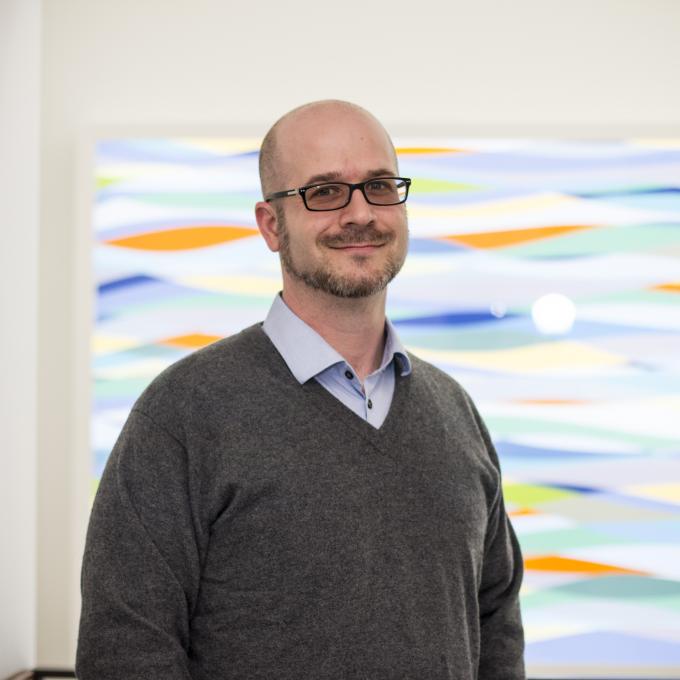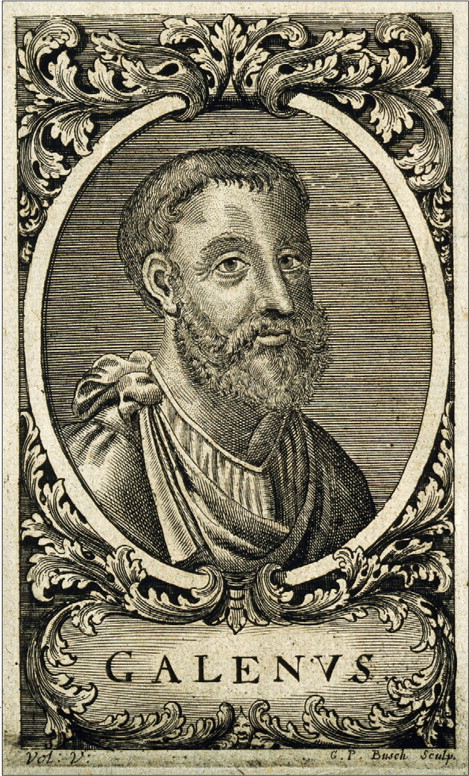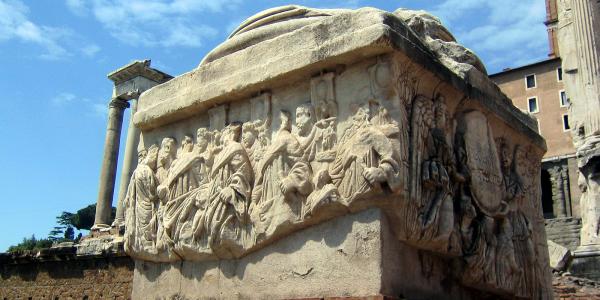Luis Alejandro Salas discusses his new book about ancient Roman physician Galen of Pergamum’s medical experiments and prolific writing.

Galen of Pergamum was a second-century CE physician and philosopher famous both for his medical experiments and his writings about them. In his recent book about Galen, Luis Alejandro Salas, assistant professor of classics, offers a new account of Galen’s medical experiments in the context of the intellectual culture of Imperial Rome.
Cutting Words: Polemical Dimensions of Galen’s Anatomical Experiments focuses on three publicly conducted medical experiments, each of which bears on a different ancient controversy over how best to explain the functions of the body. In this Q&A, Salas talks about Galen’s medical and literary practices, offering a glimpse of what makes Galen an influential figure to this day.
What are some of the ways Galen used writing alongside his medical practice, and what made you want to study him as both a writer and a physician?
Throughout all of Greek and Roman antiquity — here I’m talking about a rough period of time between the early fifth century BCE to the late third century CE — there were no independent bodies that evaluated practitioners and conferred professional legitimacy on them. Consequently, in medicine as in other intellectual pursuits, legitimacy could be a place of continual contest.
My book is partly about how certain of these medical practitioners clashed with one another in public to establish their intellectual authority. I focus on this one figure in particular, the second-century CE physician and philosopher Galen of Pergamum. Galen self-identified as a Greek, although he spent the majority of his professional career in the city of Rome.
Part of what makes Galen such an interesting figure to research is that he engaged not only in public medical performances but also in carefully written narratives of them. I argue that Galen leveraged writing to recreate important social dynamics common to his live performances, in a written medium.
Galen’s approach required him to write experimental narratives in such a way as to incorporate his readership as members of an audience who could witness, judge, and in some sense participate as surrogates to the spectators who would have been present in a live performance. I argue that Galen was not only able to do just this, but also took full advantage of the book trade in second-century Rome to expand his circle of influence by curating his authorized writing and relentlessly depositing it in libraries around the empire.
What kinds of experiments did Galen conduct in these demonstrations?
For the most part, Galen’s demonstrations were concerned with questions about human physiology. He had a particular interest in establishing what systems in the body were most closely connected, in a causal sense, with motor-sensory functions, volition, and consciousness. Galen was actively engaged in debates over questions like these, and others that dominated philosophical and medical discourse about the body at the time.
The demonstrations were performed on non-human animals exclusively. For reasons that aren’t entirely clear, human dissection and vivisection were culturally off-limits throughout most of Greek and Roman antiquity. Galen, like all but a couple of ancient thinkers, arrived at his claims about the human body by analogy to animal ones.
In my book, I focus on three experiments: the first on voice production, which is really a suite of demonstrations; the second on the bladder; and the third on the femoral artery. Each of these experiments bears on different controversies over how best to explain the functions of the body and, for lack of a better word, the physics involved in those functions.
How unusual were Galen’s experiments — and his descriptions of them — at the time?
I think it’s difficult to say how unusual his experiments were in the context of second-century Roman intellectual culture. One of the exciting and frustrating aspects of studying Greek and Roman antiquity is that so much is lost. Galen was an unbelievably prolific author, and well over a hundred of his works survive. But there are so many treatises, his own and those of others, that have been swallowed by time.
Galen is really our only surviving author who writes about public medical demonstrations from an insider’s perspective. We have other references to these sorts of public displays, and we can make other plausible assumptions about their place in the broader intellectual culture of second-century Rome. Multiple sources tell us that public medical demonstrations, whether purely abstract lectures or practical dissections, were frequent and popular. Other authors of about Galen’s time describe crowds packing auditoria or public baths to watch these spectacular performances. They compare them to other performances common at the time, which gives a sense in my view of their cultural place even if it’s impossible to speak with great confidence about raw numbers of performances, participants, and spectators.
All that being said, Galen’s vivid narratives of his performances are to my knowledge unique among the surviving writings of other authors from Greek and Roman antiquity.
How do they relate to later medical texts?
The last chapter of my book discusses Galen’s writing from the perspective of Andreas Vesalius, the famous 16th-century author, and anatomist. Vesalius’ anatomical work is popularly said to have been a watermark that distinguishes the beginnings of modern anatomy from the ancient material that preceded it. An important difference between the anatomical practices of Galen and Vesalius, and here I mean the writing along with the cutting, is that Vesalius had access to human subjects while Galen did not. Vesalius also had access to the printing press. These differences and others emphasize Vesalius’ status as a figure of rupture with his medical past.
In the book, I focus on points of continuity between Vesalius and antiquity. I argue that Vesalius’ engagement with his intellectual rivals has deep and striking parallels to that of Galen’s almost 1,400 years earlier. In Vesalius, we find the same sort of erudite engagement with — and reconstruction of — the classical past as we do in Galen, with the express purpose of establishing intellectual and professional authority and undermining that of rival practitioners. Readers familiar with the importance of the printing press to Vesalius’ anatomical work may be surprised to discover the overarching attention Galen paid to the dissemination of his ideas through writing technologies available to him in the second century.
There are other interesting parallels between the moment in which Vesalius was writing and Galen’s time, in particular the highly competitive and polemical manner in which elite physicians jockeyed for position in the medical world.
Why should we read Galen today?
The man was a fascinating figure — brilliant, professionally driven beyond measure, and unbelievably influential in the history of medicine. Galen’s writing is riveting stuff that offers a view of second-century Roman life that’s rich and invaluable from a historical perspective. Those are all really good reasons, in my view, to read his work.
However, I think we also owe it to ourselves to read material like this for other reasons. Galen and other ancient authors, flawed and challenging in so many ways, force careful readers to examine their intellectual moorings. The theories and perspectives they present to us are so distant in time and place from our own that they can appear fundamentally alien at one moment and familiar in the next. These conceptual differences provide a helpful contrast through which to consider the shape of our own medical and scientific beliefs, and how they are embedded in time. And here I don’t just mean what we’d call scientific theories; reading these texts invites us to consider our broader cultural views of the world. This is one of the most powerful experiences I have reading Greco-Roman writing, one which continues to force me to reflect on my own place in history.




